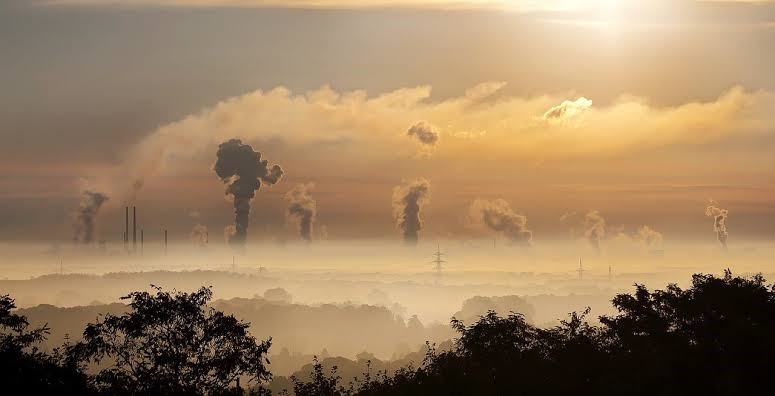
14th Emissions Gap Report 2023

23.11.2023
14th Emissions Gap Report 2023 , Daily Current Affairs , RACE IAS : Best IAS Coaching in Lucknow
|
For Prelims: Key fact of the report For Mains paper: Projections of the report, Contributions to emissions are unequal |
Why in the news?
Recently, the 14th Emissions Gap Report 2023 was released by the United Nations development program.
Key fact of the report and Key fact of the report and Projections
- There is only a 14 percent chance of limiting global warming to 1.5 degrees Celsius over pre-industrial levels, considering the most optimistic climate action projects.
- Even if the existing nationally determined contributions (NDC), both conditional and unconditional, are delivered by 2030, the world will warm by 2.5°C, breaching the 2°C target set by the Paris Agreement.
- Warming under the current policy scenarios will reach 3°C, given the implementation gap — the difference between the commitments made by countries in their NDCs and the actual measures and policies implemented to achieve those commitments. The gap still stands at five gigatonnes of carbon dioxide (CO2) equivalent.
- Only nine countries have updated their nationally determined contributions (NDC) or made new commitments since the last climate conference.
- The total number of parties replacing or updating their NDCs is now 149, with 148 of them including greenhouse gas (GHG) reduction targets, 97 of which are economy-wide.
- The report drew attention to the spike in the number of climate records being shattered, especially this year, when 86 days have experienced warming higher than 1.5°C.
- For instance, September 2023 was the hottest September ever recorded, and in 2022, global emissions peaked at 57.4 gigatonnes of carbon dioxide equivalent, among other records being broken and new ones being set.
- Of the global GHG emissions, approximately two-thirds come from fossil fuel-based CO2 emissions, the report found.
- The report revealed a concerning gap in keeping up with the required action to restrict global warming. Current unconditional NDCs — those NDCs not contingent upon the provision of external support — project a 14 gigatonnes of carbon dioxide equivalent gap for a 2°C target and a 22 gigatonnes of carbon dioxide equivalent gap for the 1.5°C goal.
- The emissions gap signifies the disparity between estimated global GHG emissions from when NDCs are fully implemented vs the least-cost pathways aligned with the Paris Agreement.
Contributions to emissions are unequal
- The report highlighted stark inequalities in contributions to climate change.
- A minority of nations, led by the United States, the European Union and China, account for a disproportionate share of historical emissions and warming.
- The G20 collectively are responsible for three-quarters of the current burden of warming.
- Additionally, wealth plays a critical role, with affluent households responsible for nearly half of worldwide consumption-based emissions.
- At the household level, the global top 10 percent income bracket generates a staggering 45-49 per cent of total emissions, while the bottom 50 percent contributes a mere 7-13 per cent.
- Thus, emissions inequalities exist not only between nations but also within them, reflecting the impact of income and wealth disparities on climate change.
- Recent policy developments within G20 economies present a mixed picture of progress as the report presents. The United States passed the Inflation Reduction Act, and analysis shows that the act will help the US reach two-thirds of its 2030 NDC goals.
- The European Union’s Fit for 55 and REPowerEU initiatives could surpass their 2030 targets, but challenges arise from increased investments in fossil gas infrastructure and a temporary shift from gas to coal.
- By September 2023, 97 parties from 101 countries, representing 82 percent of global greenhouse gas emissions, had adopted Net Zero pledges. However, the diversity and scope of these commitments vary. While 37 percent of global emissions are covered by Net Zero targets for 2050 or earlier, 44 percent have commitments beyond 2050.
- Concerns arise regarding the implementation of Net Zero pledges.
- Despite all G20 members setting Net Zero targets, progress indicators such as legal status, implementation plans, and emission reduction pace remain deeply insufficient, signaling a low confidence in the Net Zero targets.
- As many as 4 billion people lack clean cooking sources and 775 million are without electricity. There is an urgent need for affordable finance in low- and lower-middle-income countries for clean energy investments.
- These nations face challenges like high debt, low clean energy investments, and vulnerability to volatile fossil fuel markets. Access to affordable finance is crucial for them, but the costs are significantly higher compared to rich countries.
- The report pointed out that carbon dioxide removal (CDR) will be necessary, given that Net Zero emissions will be impossible without residual emissions being balanced out through removals. So, it called for recognizing the need for carbon dioxide removal strategies.
- It also cautioned that delaying significant global reductions in greenhouse gas emissions will make us more dependent on future efforts to remove carbon dioxide from the atmosphere and thus our need for CDR will only grow if the emission gap is not bridged through emission cuts
- It delved into the existing and emerging CDR approach, comparing effectiveness, timescales and identifying risks.
- It particularly differentiated between CDR and related concepts such as Carbon Capture and Storage.
- CDR is only the direct removal of CO2 from the atmosphere and its durable storage in geological, terrestrial, or ocean reservoirs or in products.
- It further stated that while carbon capture and storage and carbon capture and utilisation share components with some CDR methods, their application on CO2 emissions from fossil fuels can never result in CO2 removal from the atmosphere.
Source:Down to earth